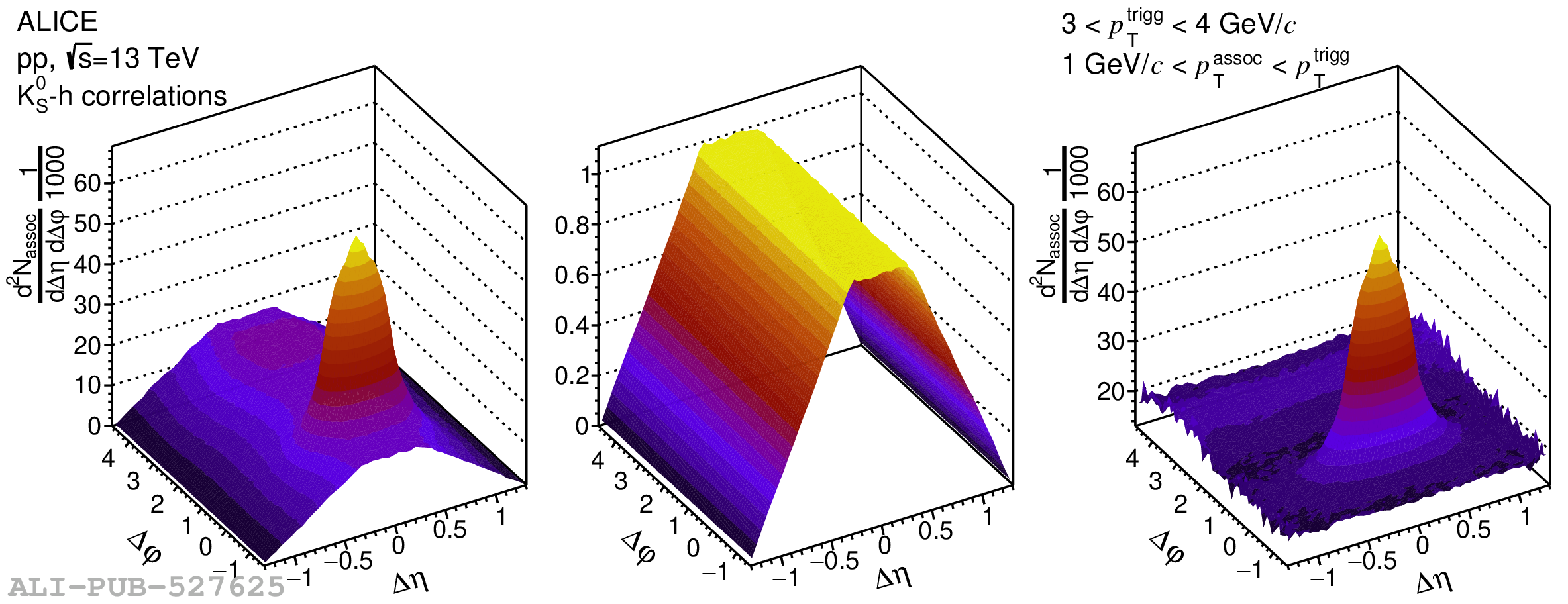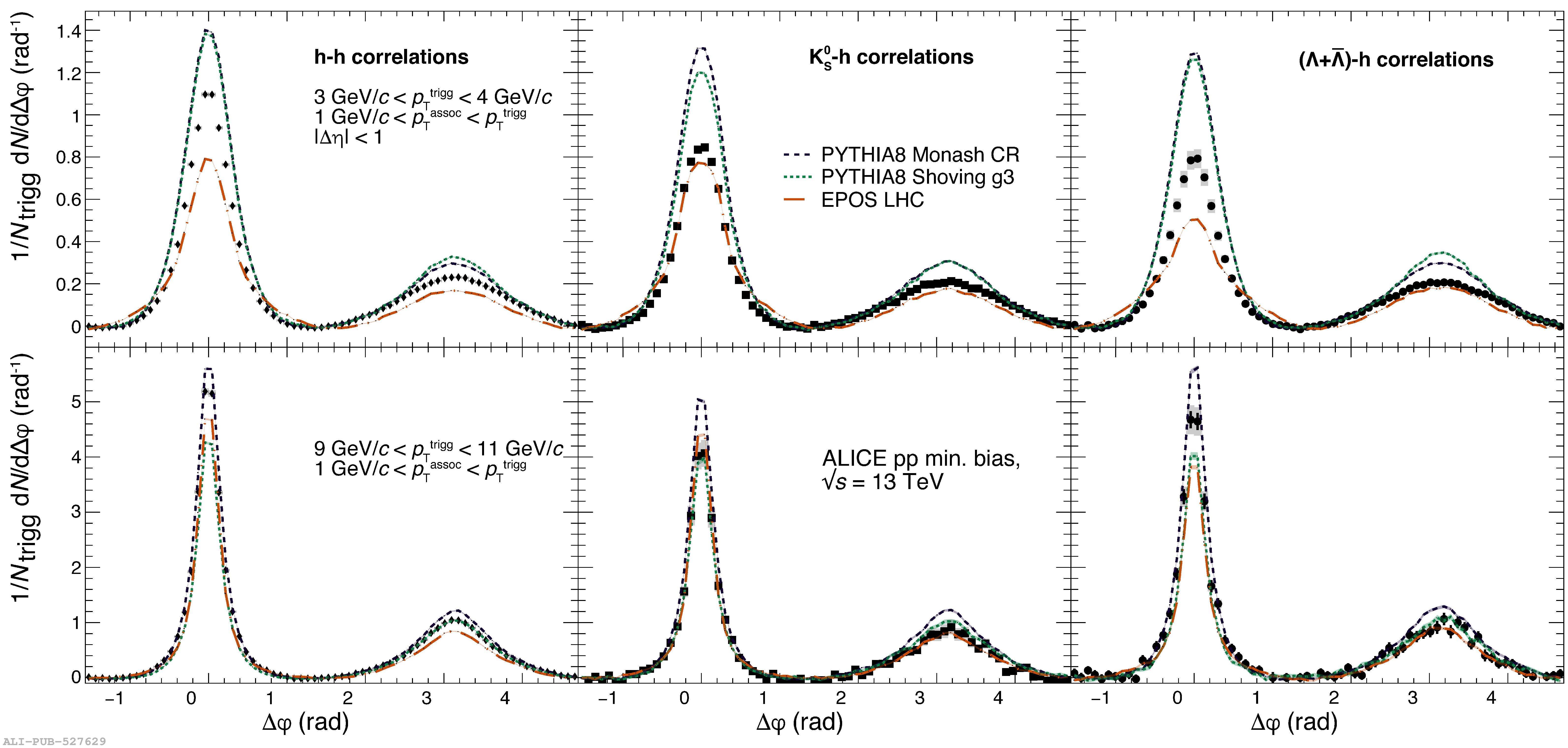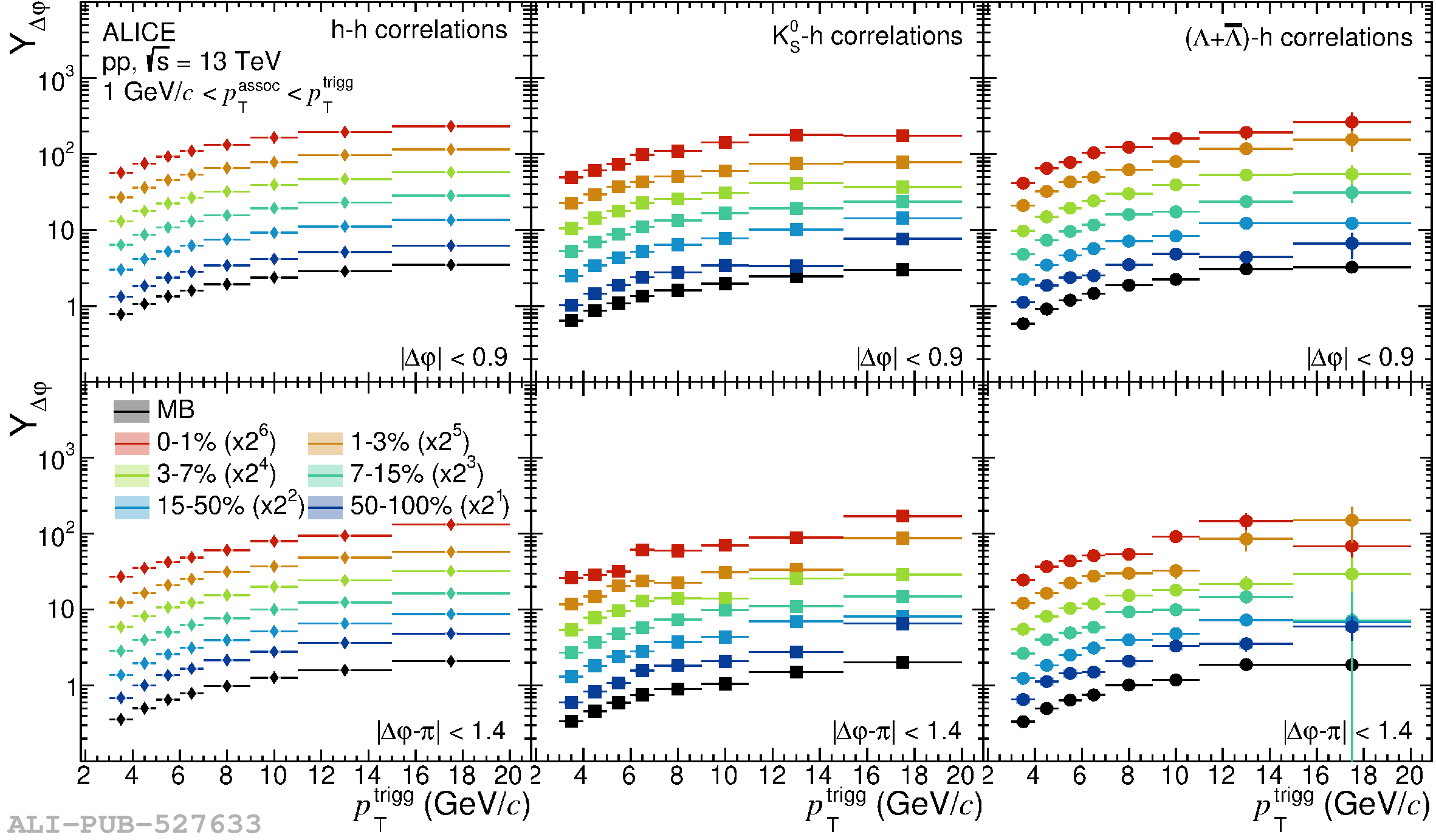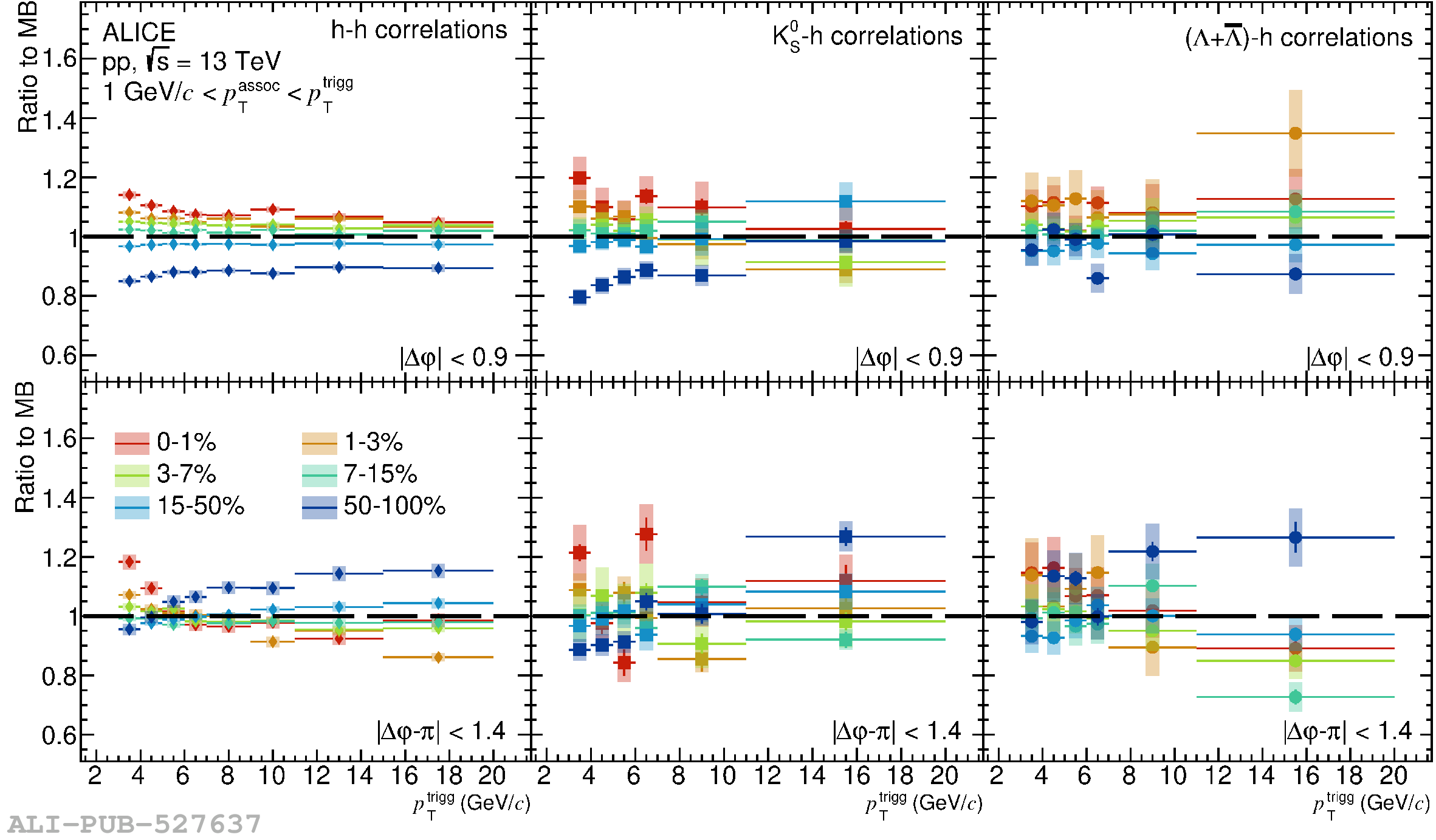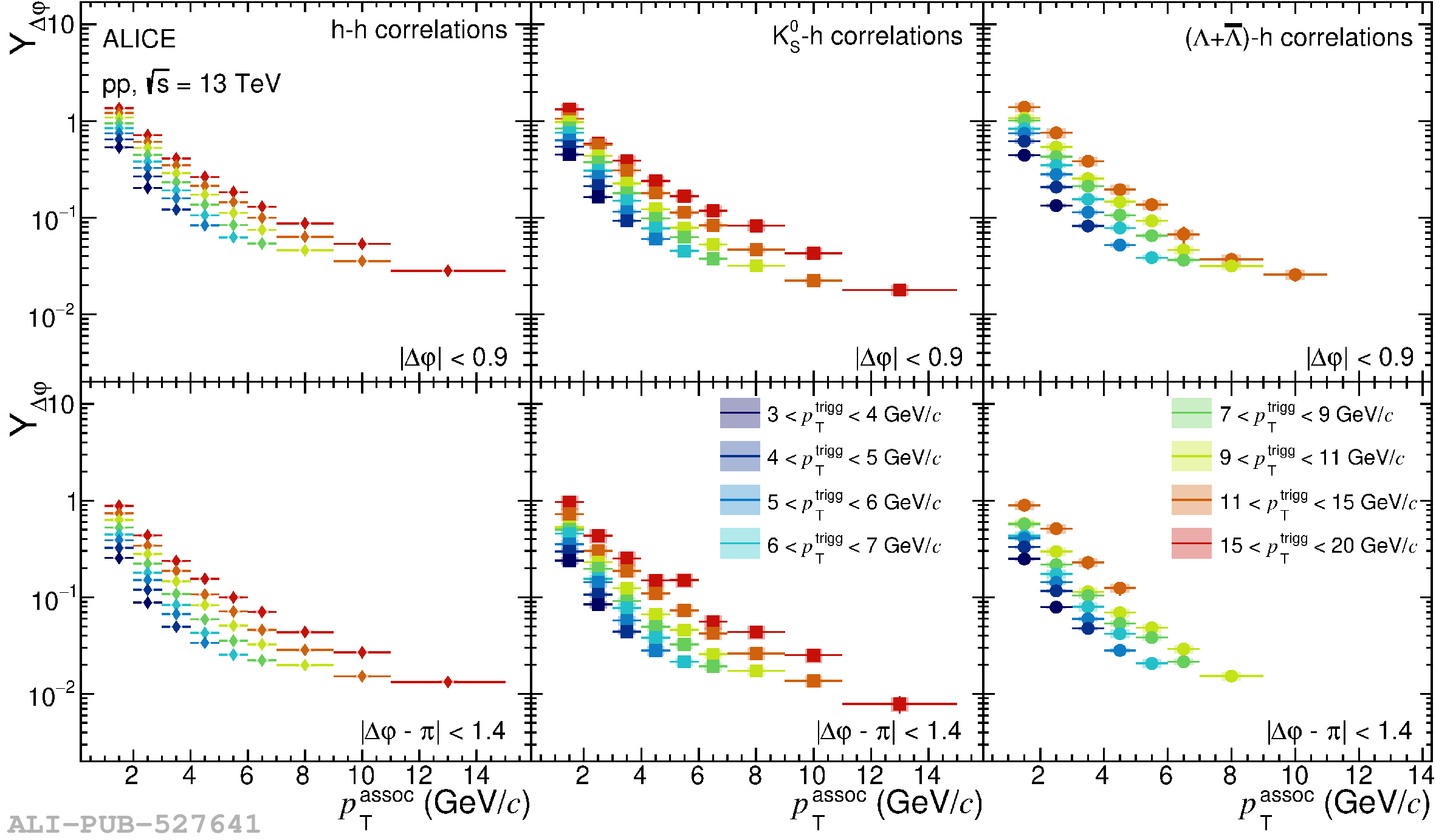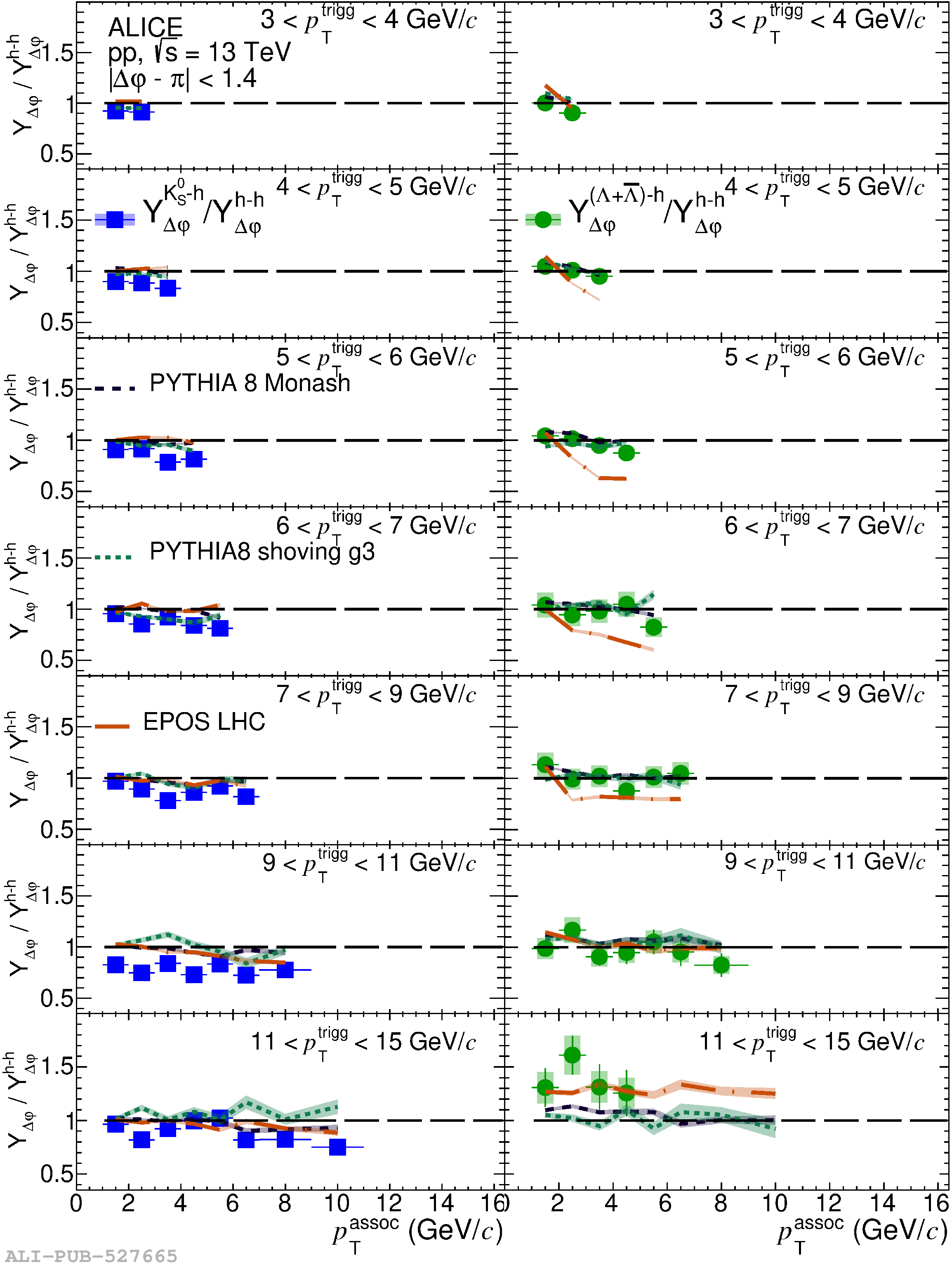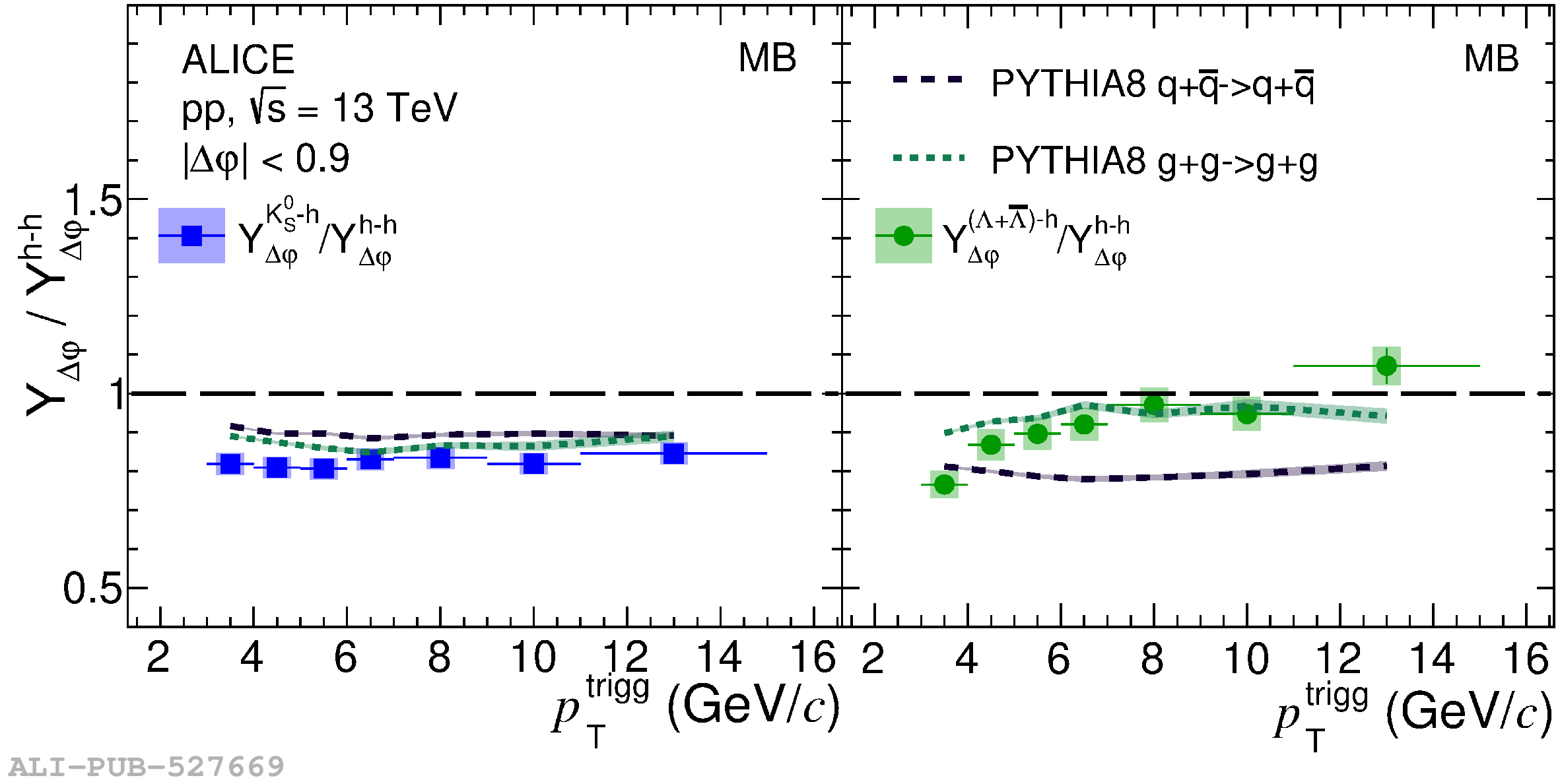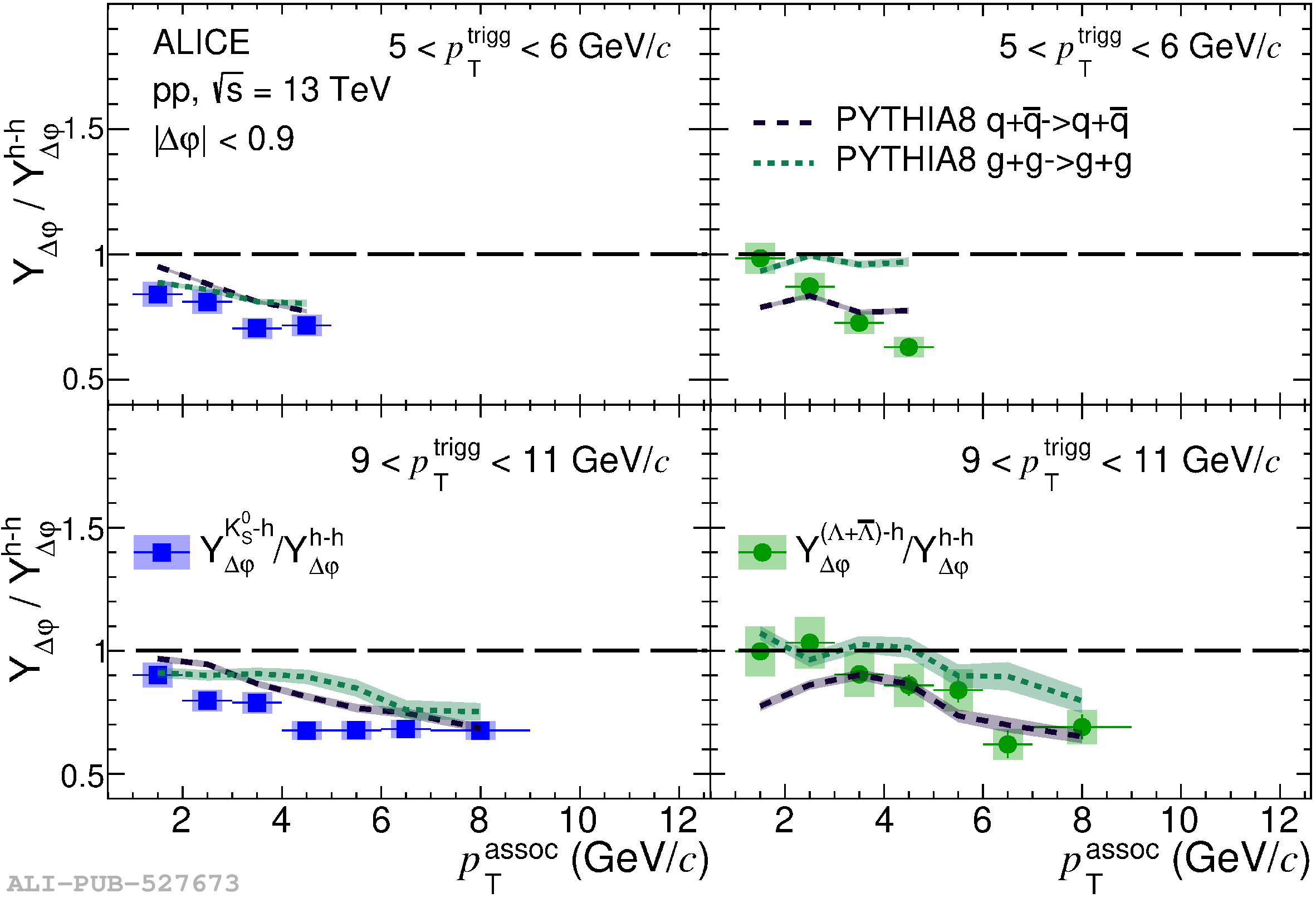Two-particle azimuthal correlations are measured with the ALICE apparatus in pp collisions at $\sqrt{s} = 13$ TeV to explore strangeness- and multiplicity-related effects in the fragmentation of jets and the transition regime between bulk and hard production, probed with the condition that a strange meson (K$^{0}_{\rm S}$) or baryon ($\Lambda$) with transverse momentum $p_{\rm T} > 3$ GeV/c is produced. Azimuthal correlations between kaons or $\Lambda$ hyperons with other hadrons are presented at midrapidity for a broad range of the trigger ($3 <~ p_{\rm T}^{\rm trigg} <~ 20$ GeV/$c$) and associated particle $p_{\rm T}$ (1 GeV/$c$ $<~ p_{\rm T}^{\rm assoc} <~ p_{\rm T}^{\rm trigg}$), for minimum-bias events and as a function of the event multiplicity. The near- and away-side peak yields are compared for the case of either K$^{0}_{\rm S}$ or $\Lambda$($\overline{\Lambda}$) being the trigger particle with that of inclusive hadrons (a sample dominated by pions). In addition, the measurements are compared with predictions from PYTHIA 8 and EPOS LHC event generators.
Eur. Phys. J. C 81 (2021) 945
HEP Data
e-Print: arXiv:2107.11209 | PDF | inSPIRE
CERN-EP-2021-146
Figure group

